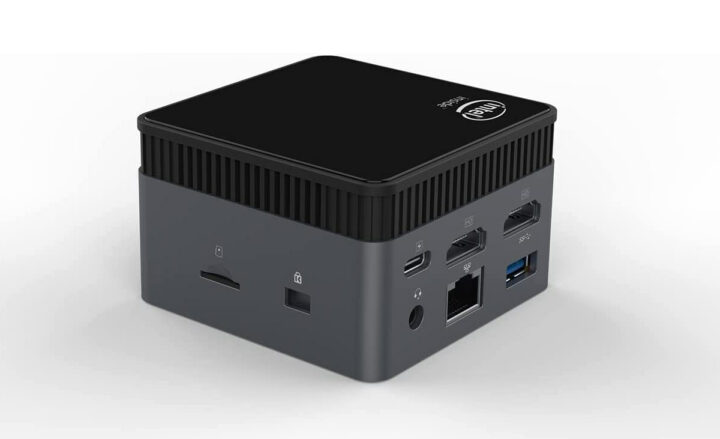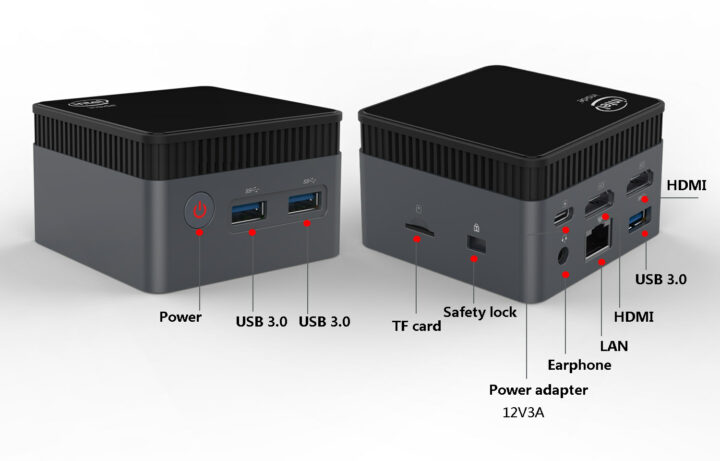In the last couple of years, we’ve seen several palm-sized 2.4-inch mini PCs based on Gemini Lake processors with the likes of CHUWI LarkBox, GMK NucBox, or LIVA Q2.
ZX01 mini PC is a slightly larger 2.8-inch mini PC based on a more recent and powerful Celeron N5105 Jasper Lake processor with 8GB of DDD4 RAM, and a 128GB to 1TB M.2 SSD. The tiny computer also offers two 4K capable HDMI outputs, a Gigabit Ethernet port, three USB 3.0 ports, and an audio jack.
ZX01 mini PC specifications:
- SoC – Intel Celeron N5105 quad-core Jasper Lake processor @ 2.0GHz / 2.9GHz (Turbo) with Intel UHD graphics 605; 10W TDP
- System Memory – 8GB LPDDR4x or DDR4 (TBC)
- Storage
- 128GB, 256GB, 512GB, or 1TB M.2 2242 SSD
- MicroSD card slot
- Video Output – 2x HDMI ports
- Audio – 3.5 audio jack, digital audio via HDMI
- Networking
- Gigabit Ethernet via Intel i225 controller
- Dual-band 802.11b/g/n/ac WiFi 5 and Bluetooth 4.2 via Intel AC7265 card
- USB – 3x USB 3.0 ports
- Expansion – 1x M.2 SATA/PCIe socket (used by SSD), 1x M.2 PCIe socket (used by AC7265 card)
- Misc – RTC plus CR2032 battery, Power and LAN LEDs, Power button, Kensington lock, cooling fan
- Power Supply – 12V/2.5A via USB-C connector (Note: most probably not compatible with USB PD)
- Dimensions – 72 x 72 x 45mm (2.8″ x 2.8″ x 1.8″)
- Weight – 190 grams
The company lists Windows 10 and Windows 11 operating systems, but I don’t see why recent Linux distributions would not work as well. While the WiFi module and SSD should be replaceable, the RAM should be soldered on the mainboard. That means despite the processor supporting up to 16GB RAM, or possibly more, it’s not feasible to (easily) upgrade the memory.
ZX01 Intel Celeron N5105 mini PC is available for $184 and up on Aliexpress, and starts at $269 on Amazon US.
Via Liliputing

Jean-Luc started CNX Software in 2010 as a part-time endeavor, before quitting his job as a software engineering manager, and starting to write daily news, and reviews full time later in 2011.
Support CNX Software! Donate via cryptocurrencies, become a Patron on Patreon, or purchase goods on Amazon or Aliexpress






